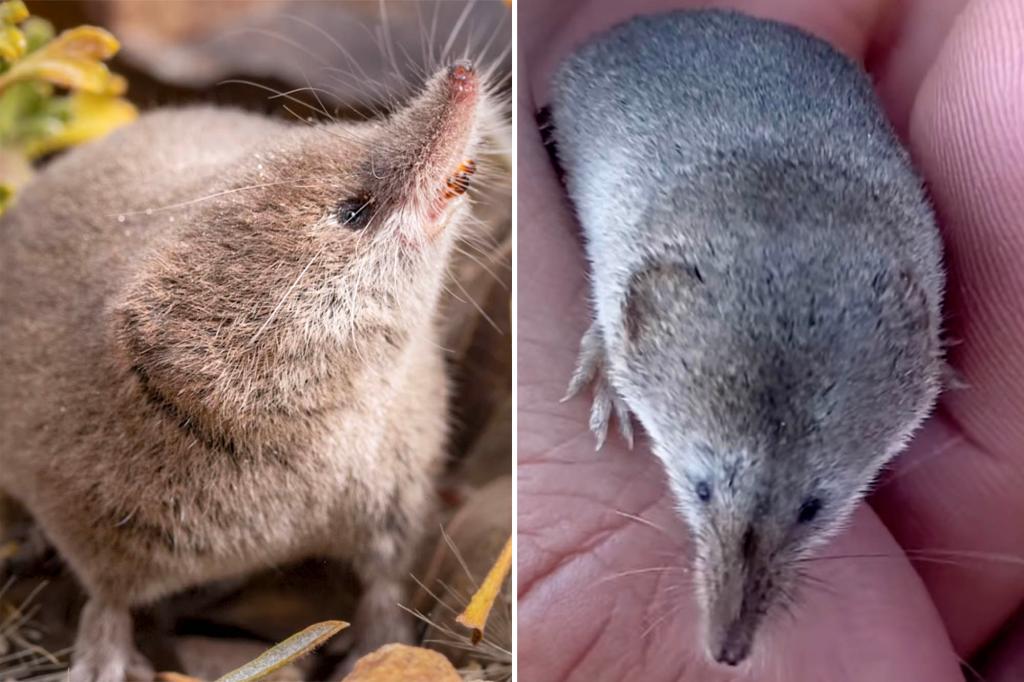The Elusive Mount Lyell Shrew: A Photographic First
For over a century, the Mount Lyell shrew, a tiny mammal native to the Sierra Nevada region of California, remained an enigma, its existence documented yet visually unconfirmed. Named after the majestic Mount Lyell in Yosemite National Park, this diminutive creature, measuring a mere 9 to 10 centimeters in length and weighing a scant 2 to 3 grams, held the unique distinction of being the only mammal in California to have evaded the lens of a camera. This elusive status intrigued three college students, two from UC Berkeley and one from the University of Arizona, who embarked on a determined mission to capture the first-ever images of this elusive shrew.
Driven by a passion for wildlife and a desire to contribute to scientific knowledge, Vishal Subramanyan, Prakrit Jain, and Harper Forbes understood the significance of their endeavor. The Mount Lyell shrew, considered a species of special concern by the state of California, warranted further study to aid in its conservation. These students recognized that photographic documentation was crucial for raising public awareness and fostering a connection between people and these often-overlooked creatures. Armed with this understanding and a permit from the California Department of Fish and Wildlife, the trio set out to make history.
Their quest led them to the desert landscapes of the Eastern Sierra, where they meticulously set up traps baited with a tempting combination of cat food and mealworms. The students were aware of the shrew’s extraordinarily high metabolism, which necessitates constant feeding. To ensure the trapped animals’ survival, they maintained a rigorous schedule, sleeping no more than two hours at a time to replenish the bait. This demanding routine became a testament to their dedication and underscored the urgency of their task.
The students’ efforts were rewarded with the capture of five Mount Lyell shrews, along with ten other shrews belonging to three different species. The moment of truth arrived when they carefully photographed their elusive quarry, capturing the first-ever images of the Mount Lyell shrew. The photos revealed a pointy-nosed, beady-eyed creature with greyish-brown fur, a visual confirmation of its existence that had eluded researchers for generations. To definitively confirm the species, small tail samples were sent to the California Academy of Sciences for genetic testing, providing irrefutable proof of their historic find.
The significance of this achievement extends beyond the mere act of capturing a photograph. It represents a crucial step in understanding and protecting the biodiversity of a rapidly changing planet. By bringing this elusive creature into the public eye, the students hope to generate greater interest in its conservation and the preservation of its fragile habitat. Their dedication highlights the importance of citizen science in contributing valuable data and insights that can inform conservation efforts.
The story of the Mount Lyell shrew underscores the importance of scientific curiosity and the pursuit of knowledge. These students’ dedication, combined with their meticulous planning and unwavering commitment, allowed them to achieve what had eluded others for over a century. Their success serves as an inspiration for aspiring scientists and conservationists, demonstrating the power of individual initiative in making significant contributions to our understanding of the natural world. Moreover, their work highlights the critical role of photography in documenting biodiversity and fostering a connection between humans and the often-overlooked wonders of the natural world. By bringing the Mount Lyell shrew out of the shadows and into the spotlight, these students have not only made history but also contributed to a greater appreciation for the delicate balance of life on Earth.

